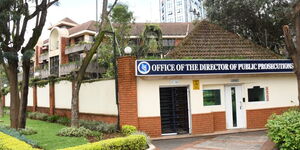Dill is a feathery green herb that most people have probably seen in salads or soups, but they are not aware of how farmers are minting millions of shillings from the crop.
Though the herb looks fragile, it gives the world a powerful taste of bitter-sweet aroma, adding a zesty flavor to meals. It is used in most kitchens to flavor fish, eggs, potatoes, and various soups. It is usually added to the meal at the last moment.
The demand for dill herb has been growing over the years especially from Hindi hotels and the international market. The herb is particularly sought after in Russia, Central Asia, parts of Scandinavia, Central Europe, North Africa, and some areas of the United States.
In Kenya, only a few farmers are cultivating it commercially and they are smiling all the way to the bank. In the local food markets, a piece, that is one leaf, goes for Ksh25 or more. A bunch of the herb in shopping malls goes for up to Ksh2,000.
With all the money factors attached to the crop, it is has healing and medicinal values.
Its Benefits
Research studies have shown that the dill herb might have some anti-diabetic effects and that is why it is used in the preparation of most cuisines all over the world.
In some communities, the dill seeds are ground and mixed with water and used for aiding digestion. They are chewed by some people to get rid of bad breath.
It is believed that dill leaves can be chewed to lower cramp pains. For lactating mothers, they also chew the leaves to increase milk production.
Research studies conclusively deduce that the dill herb helps those suffering from insomnia, with some people infusing it into wines.
In some parts of Asia, they believe that the dill herb is associated with good luck and even casting away bad spells and they hang them on the doors and even some on their beds to prevent nightmares.
Farming and managing the herb
The crop can thrive under different soil textures, be it loamy, clay, or even sand, so long as it is drained and has a pH ranging from 4.5 to 6.5. It also requires just little rainfall of about 650mm to 1000mm. Alternatively, irrigation is advised.
After properly preparing the seedbed and the soil properly mixed with organic manure, the seeds bought from accredited providers take 10 - 14 days to germinate.
After that planting is done preferably during the rainy season to cut costs on watering the crop and the labour required. They are sown at a spacing of 30cm by 30cm by 45cm. The crop can be planted near onion or cabbage fields but not parsley or carrot fields mainly because they are related and thus increase the chances of spreading of diseases.
During the growth period, the herb is managed by frequent watering but remember not in excess. Regular weeding is mandatory for the herb to do well.
Other than that, pest and disease control is key to the success of dill farming. Leaf spot is the main fungal disease noted in dill production though it's rare if field hygiene is observed. One is advised to consult experts to get proper pest and pesticides control.
Unlike other crops which take months to be ready, dill herb only takes 70 days to mature for harvesting. Once it is done, the leaves or stalks are pre-cooled to remove any field heat. After that, they are placed in the shade to avoid rapid moisture loss.
For this reason, most farmers tend to get ready market so that once they are out of the farm they are directly sold. But still, they can be stored in refrigerators especially for long-term sales or for the export market.












